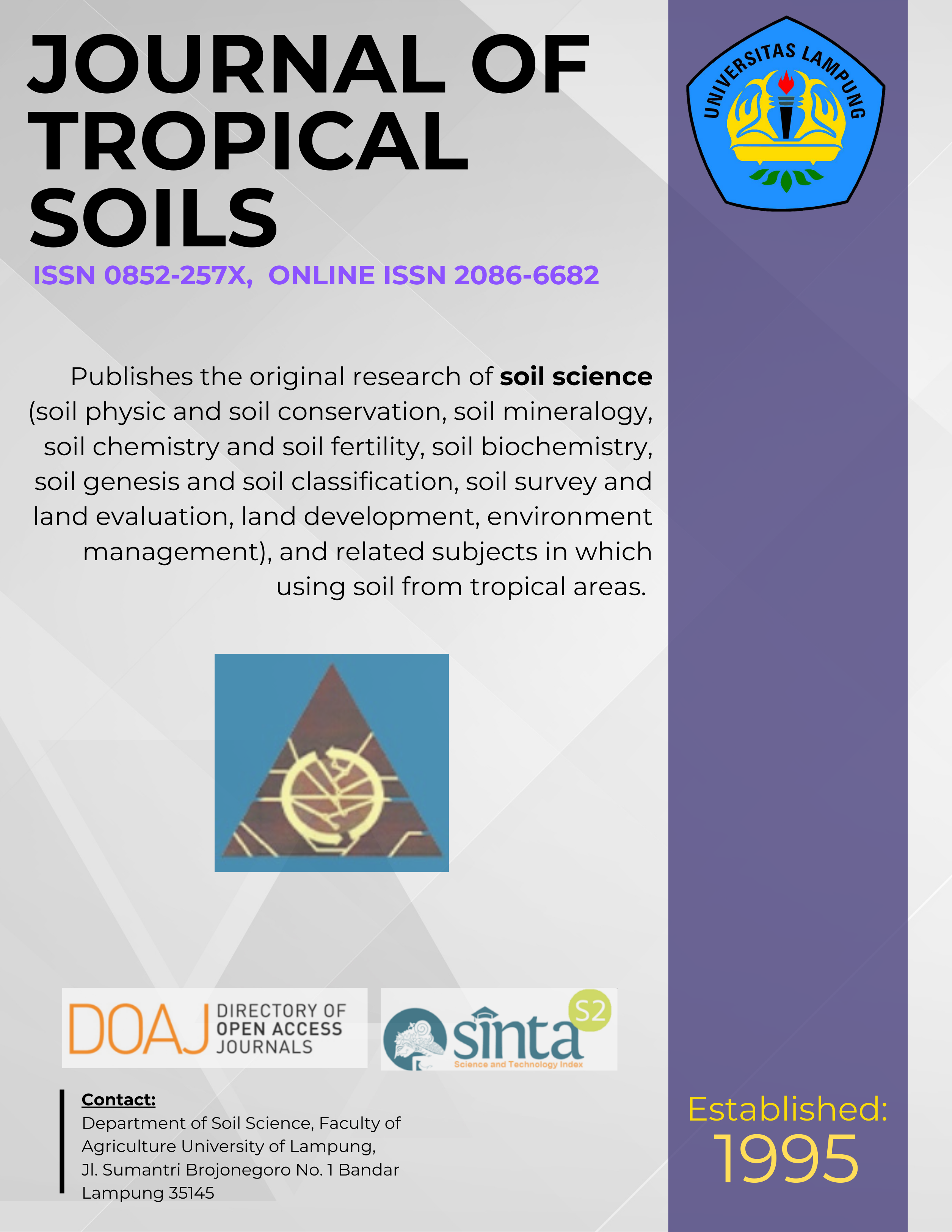Land Suitability for Developing Soybean Crops in Bumi Nabung and Rumbia Districts, Central Lampung
Main Article Content
Abstract
Bumi Nabung district consists of 6 villages with a total area of 7,810 ha which are divided into 251 ha of rain fed rice lands, 4,908 ha of dry land, 1,317 ha of lowland, 1,158 ha of yards and 176 ha of others. Rumbia district consists of 14 villages which has a total area of 22,696 ha of land consisting of 2,728 ha of yards, 17,358 ha of dry land, 326 rainfed paddy field, 839 ha of swamp land, 1,470 ha of lowland and 4,232 ha of others. Bumi Nabung and Rumbia districts have a low soil fertility potential that is reflected by the lowof soil pH, CEC, total N, available P, and high level of exchangeable Al and Al saturation. The results assessment based on the physical and chemical characteristics showed that Bumi Nabung district have 5 villages on suitable class S-2 (North Bumi Nabung, East Bumi Nabung, Bumi Nabung Ilir, South Bumi Nabung, and Sri Kencono) and one village New Bumi Nabung has less suitable class S-3. In the Rumbia District, there were 14 villages belonged to suitable class (S-2), namely Reno Basuki, Rekso Binangun, Teluk Dalam Ilir, Rukti Basuki, Restu Baru, Restu Buana, Bina Karya Buana, Bina Karya Putra, Bina Karya Jaya, Bina Karya Utama, Bina Karya Sakti, Joharan, Rantau Jaya Ilir and Rantau Jaya Baru. Bumi Nabung and Rumbia districts have the potential fertility and land suitability for extensification and development of soybean crops. The main technology components to support this program are the use of ameliorant (dolomite and zeolite), the application of organic fertilizers (manure and compost) and inorganic fertilizers (NPK).
Keywords: Acid soil, central Lampung, land suitability, soil fertility, soybeans
Downloads
Article Details
Section
License for Authors
Authors who publish with this journal agree to the following terms:
- Authors retain copyright and grant the journal right of first publication with the work simultaneously licensed under a Creative Commons Attribution License that allows others to share the work with an acknowledgement of the work's authorship and initial publication in this journal.
- Authors are able to enter into separate, additional contractual arrangements for the non-exclusive distribution of the journal's published version of the work (e.g., post it to an institutional repository or publish it in a book), with an acknowledgement of its initial publication in this journal.
- Authors are permitted and encouraged to post their work online (e.g., in institutional repositories or on their website) prior to and during the submission process, as it can lead to productive exchanges, as well as earlier and greater citation of published work (See The Effect of Open Access).
License for Regular Users
Other regular users who want to cite, distribute, remix, tweak, and build upon author’s works, even for commercial purposes, should acknowledge the work’s authorship and initial publication in this journal, licensed under a Creative Commons Attribution License.

